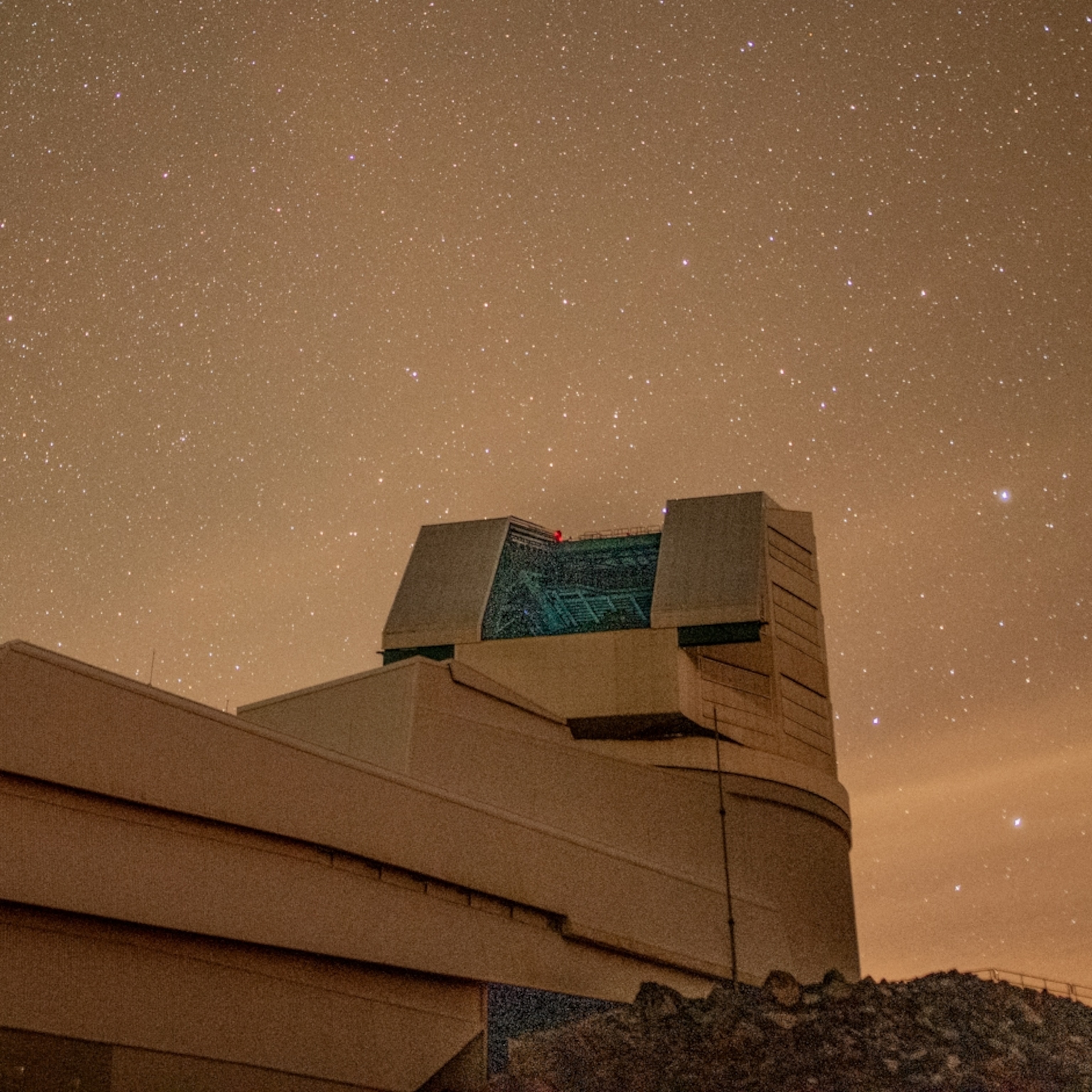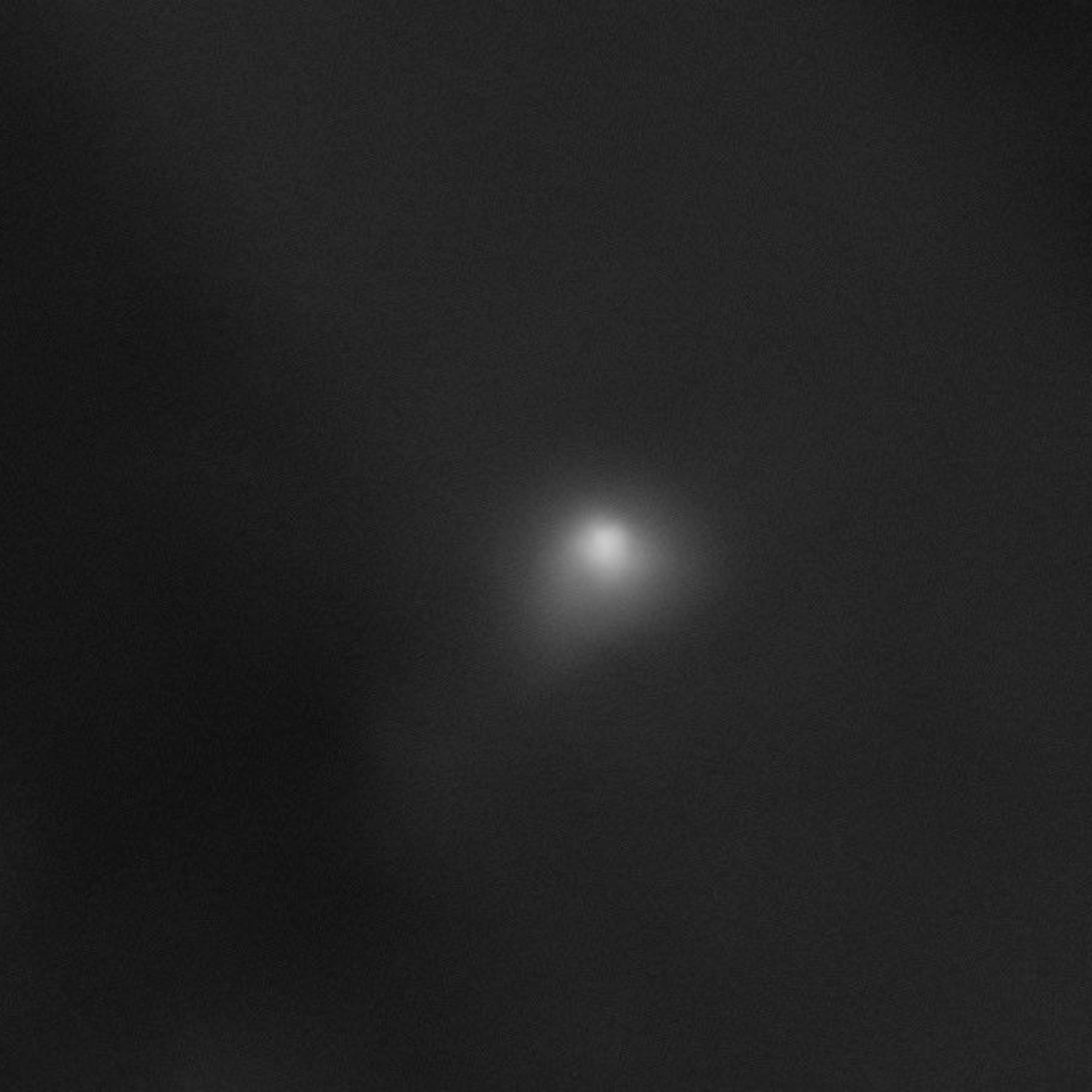On the first day of December 2020, dawn in Puerto Rico was spectacular. The skies blazed in shades of lilac and dusky rose, and the rising sun cast a warm glow on a giant radio telescope nestled among the karst mountains near the island’s northern shore.
Now, when the sun climbs over those mountains, it shines on the tangled ruins of a scientific and cultural treasure.
For nearly six decades, the Arecibo Observatory was Earth’s largest window to the cosmos. Its mammoth, 1,000-foot-wide dish made it exquisitely sensitive, able to capture radio waves that wash over Earth with just a millionth of the energy in a falling snowflake. High above the dish, an enormous 900-ton platform held the equipment needed to focus those radio waves, including a dome filled with a complex reflector system—a structure large enough to engulf a four-story house.
But as the sky brightened on that lavender morning, a crucial cable suspending the platform ruptured—and then another broke, and then another. With an enormous roar, the floating platform slipped out of the morning sun and hurtled toward the shaded jungle floor.
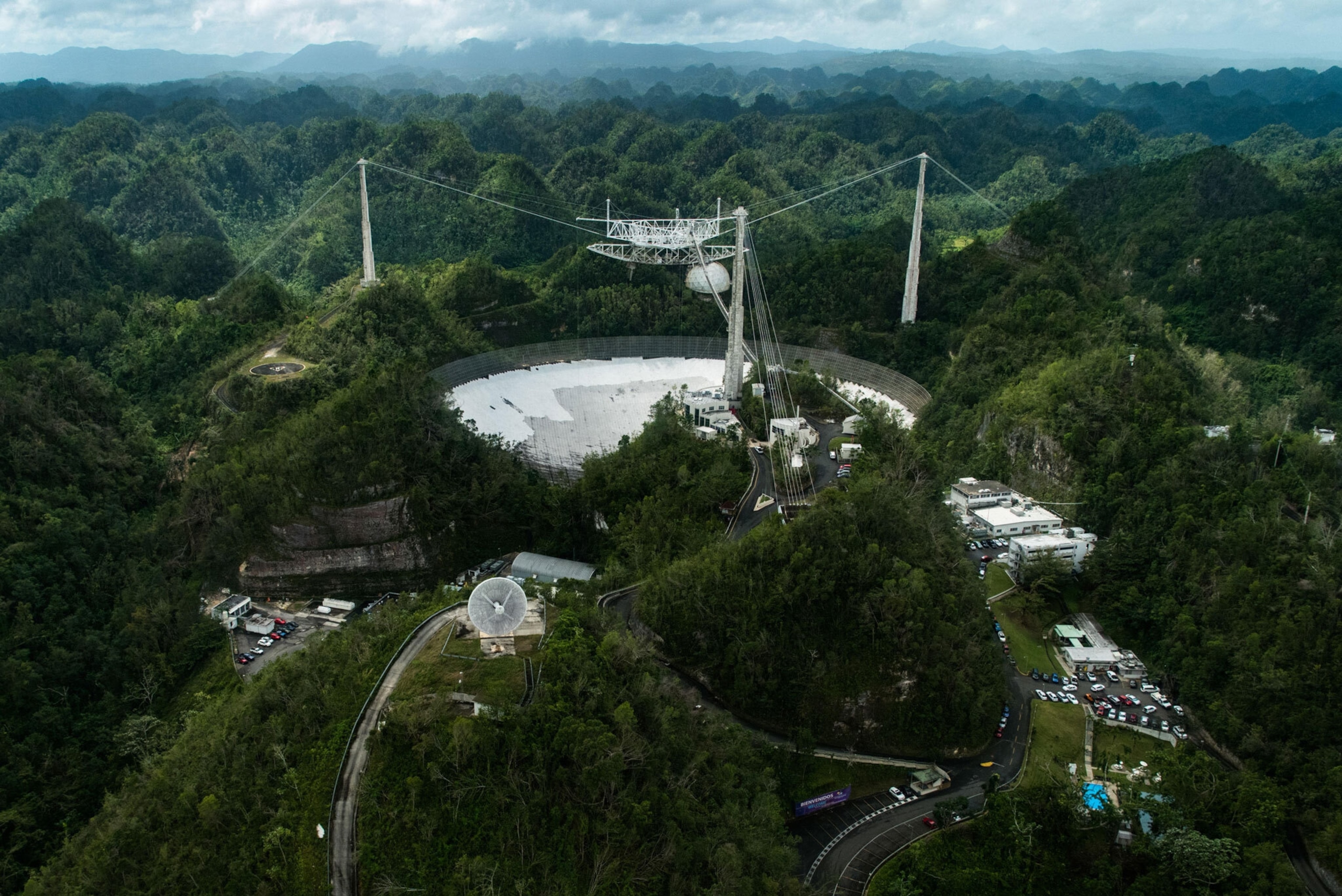
When it fell, the thin-skinned dome smashed through the dish and crumpled. The triangular platform swung violently into a rock face and sagged as it came to rest at the cliff’s base. The tops of the three support towers snapped off, sending concrete cascading into nearby ravines and parking lots, while plummeting cables lashed the dish and nearby buildings. A catwalk to the platform disintegrated, sending metal and concrete raining down like grotesque confetti.
From the observatory’s control room, Ángel Vázquez—chief of telescope operations and an observatory employee for more than 40 years—watched as the platform fell. “We heard a loud sound, a loud bang outside the control room, and ... we started to see the eventual downfall of the observatory,” Vazquez said in a video posted on Twitter. “My whole life has been at the observatory.”
Nearby, scientist Jonathan Friedman heard a terrible rumble and ran to the crest of a nearby hill. He looked toward the towers, saw a cloud of dust and emptiness, and started screaming.

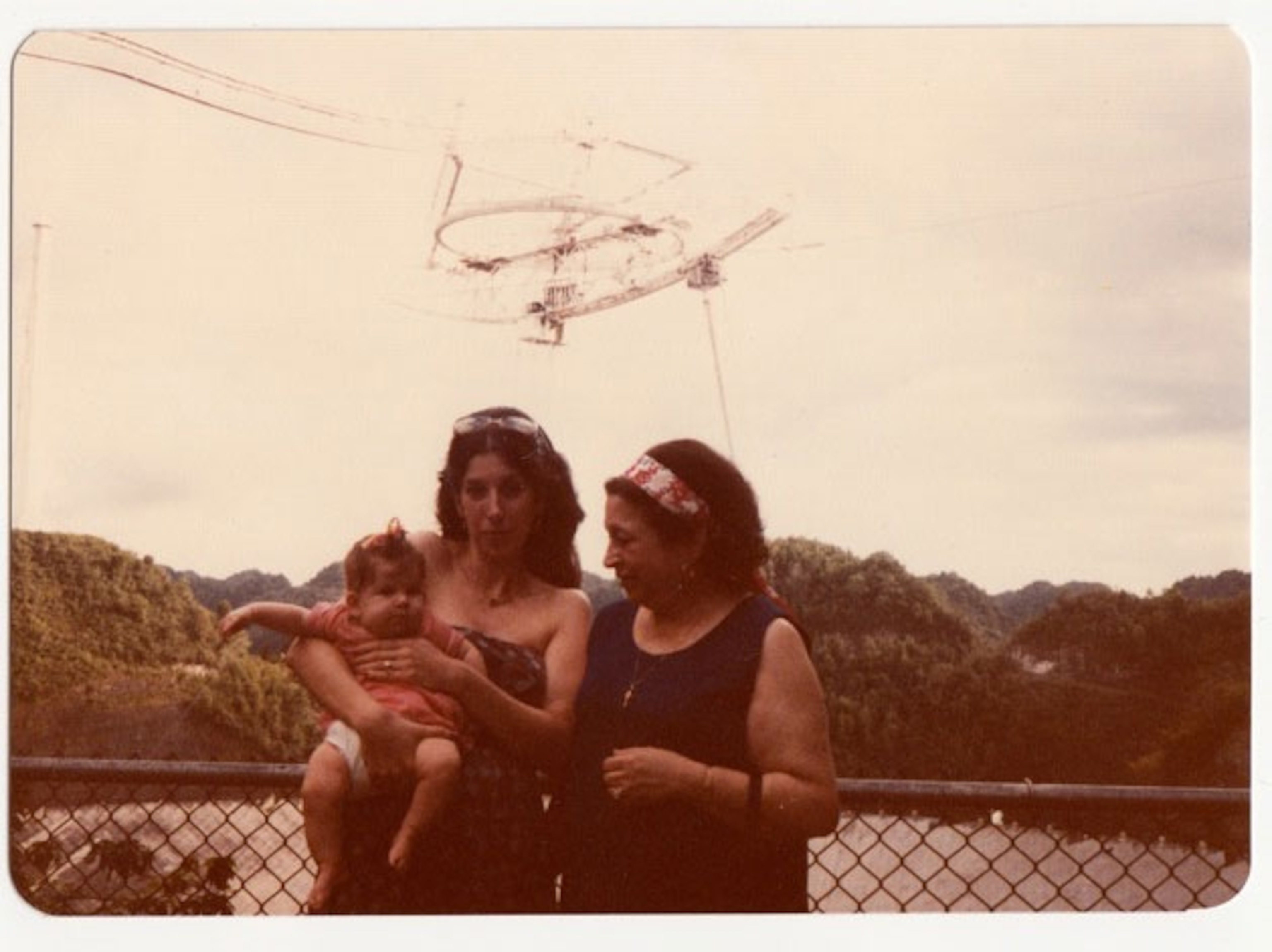
And I saw a tweet go by reporting that the Arecibo platform “acaba de colapsar”—had just collapsed. It was news I’d been dreading, a story I did not want to write.
I’ve seen the same kind of golden light that illuminated Arecibo the morning the telescope collapsed. And I’ve watched as dusk washed over the Puerto Rican mountains, summoning the coquí tree frogs to sing their nightly chorus. Each time I said goodbye to the telescope, I thought it would be waiting when I returned.
For many Puerto Ricans, astronomers, and space enthusiasts, Arecibo was more than a telescope. Like the monuments and cathedrals that humans revere, Arecibo’s value transcended its utility. The observatory was potently symbolic, almost sacred, and it has been a part of my family history for more than half a century—a home for my father, and a cherished part of his work as an astronomer. My parents love Puerto Rico, their window to the stars, and over the decades, they shared that love with their growing family.
A titan rises
“The first time I visited Arecibo was in 1964,” says Frank Drake, my dad and a former observatory director. In the early 1960s, Dad was best known for conducting Project Ozma, the first scientific search for communicating extraterrestrials, and for the Drake Equation, a formula that estimates how many alien civilizations are detectable in the Milky Way galaxy.
After a sojourn at NASA’s Jet Propulsion Laboratory, Dad joined the faculty at Cornell University, which managed Arecibo. Cornell sent him to the Caribbean to check out the one-year-old telescope, an instrument that seemed blatantly improbable when Dad first heard it described—especially the instrument platform hanging 50 stories above the dish.
“Hanging from what?” he recalls asking in his 1992 autobiography, Is Anyone Out There?, co-written with Dava Sobel. Seeing the telescope in person made it no less improbable, Dad says. He describes it as looking like “an alien visitation” in a steamy landscape—an otherworldly apparition among the rainforested mountains.
“It’s just stunning. It was so large,” Dad says. The observatory soon became a second home for him, and he would come to treasure Puerto Rico’s frequent rainstorms, piña coladas, and the fiery-flowered Delonix regia trees lining the roads to the observatory.

Funded by the Department of Defense, Arecibo was always an audacious instrument, completely unlike anything else on Earth when it was built. Crafting the titan was a team effort, and the same firms that designed the St. Louis’s Gateway Arch and Los Angeles’s Dodger Stadium helped design the telescope.
The observatory’s primary purpose was to search for signs of Cold War-era projectiles streaking through Earth’s ionosphere—a sheath of charged particles high above the Earth’s surface. Not much was known about our planet’s upper atmosphere at the time, so the facility included a powerful radar that could peer through the layers shrouding Earth and sniff out any disturbances.
"At the time, it was realized that this could be a major radio telescope, and the design was made so it could serve that purpose as well,” Dad says. When he arrived, the facility’s radar worked well, but the dish’s surface was essentially covered in chicken wire fencing, making it too wavy for precise observations of astronomical phenomena such as planetary nebulae, star forming regions, and some distant galaxies.
“I remember taking one look at the reflector dish and thinking, Oh, there’s a lot of improvements that need to be made here,” Dad says. He spent his early visits recruiting experts to upgrade the observatory’s hardware, commuting between the island and upstate New York.

“A one-way ticket from Kennedy [airport] to San Juan was $45—and you didn’t even have to buy it in advance. You could just show up,” Dad says. “I could get from home in Ithaca to Arecibo in seven hours.”
He didn’t mind the constant trips. Working at the observatory was a dream. Built in a tropical paradise, the giant radio dish had the potential to be a world-class facility—and Dad was determined to help it reach that potential. The observatory staff, who were recruited largely from the island, were eager to work on the telescope; even early in its history, Arecibo was an exciting project for the U.S. territory.
Shepherding a giant
In 1966, Cornell appointed Dad to a two-year term as observatory director. He moved his family into a house on the edge of the city of Arecibo, and my three brothers quickly learned several Spanish dialects. The boys loved going to the beach, but they also loved visiting the telescope—often as a special treat on the weekends.
“I was happy and proud,” Dad says, “and thought everything was going to be smooth, which it was.”
During those years, scientists aimed Arecibo at Mercury and discerned that the tiny planet spins once on its axis every 59 days—not every 88 days, as expected. Using the radar to map the lunar surface, they helped NASA’s Apollo program select landing sites for the moon-bound astronauts. Later, Arecibo produced the first maps of Venus.
They pointed Arecibo at newly discovered and mysterious objects that emitted pulses of radio waves—soon to be known as pulsars—to help reveal that they were natural sources rather than artificial messages from faraway civilizations. Additional work determined the pulsation rate of the Crab Pulsar, one of the best-known of these spinning stellar lighthouses.
Dad and his team also helped the Pentagon conduct a few classified tests to figure out whether pulses of electromagnetic radiation could disable radars as powerful as Arecibo’s.
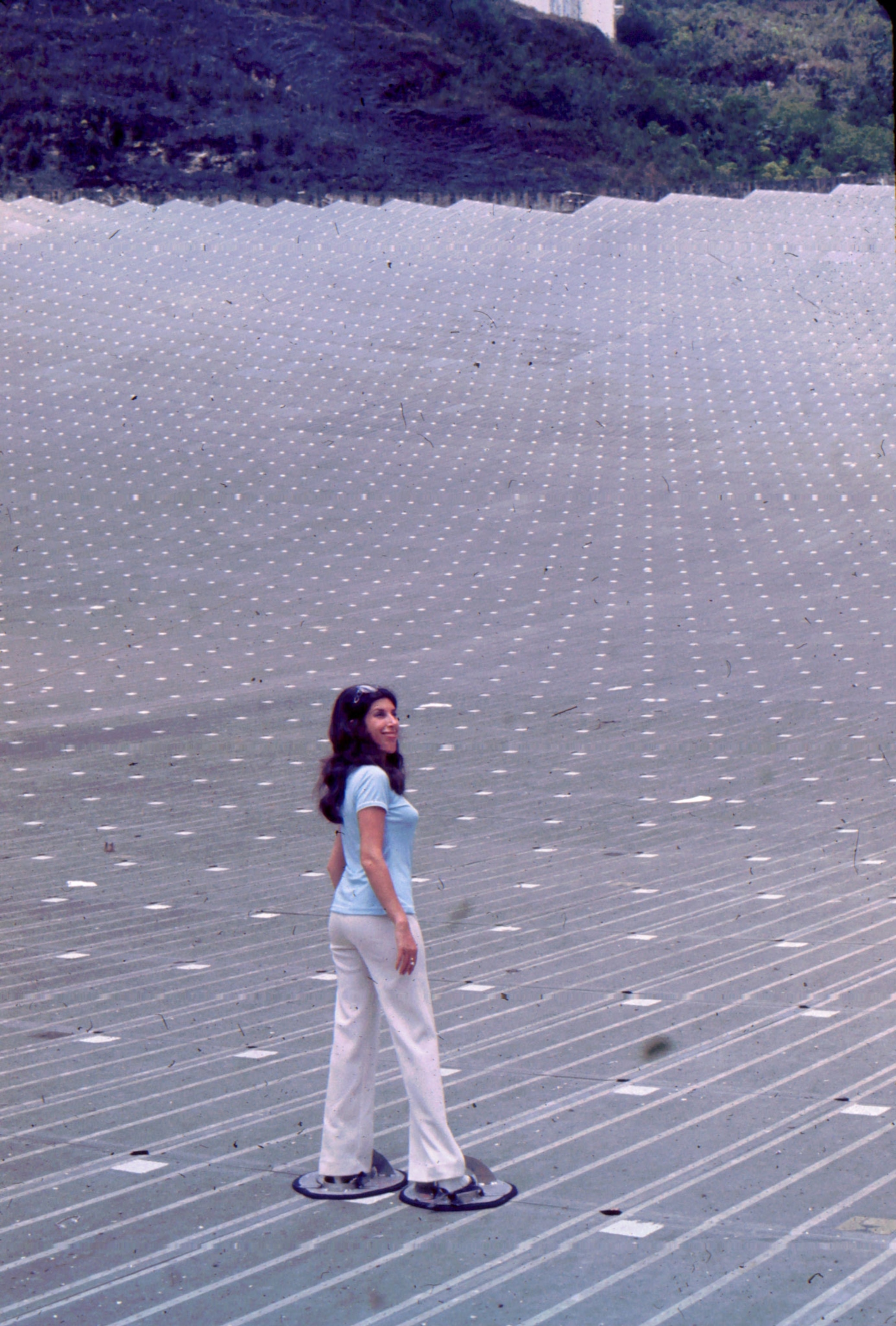

Fifty years ago, as my brothers climbed all over the giant telescope in the mountains, Arecibo was thriving. It had a healthy budget, support from the National Science Foundation, and at least one devoted member of Congress: John Davis, from Georgia, who chaired the committee in charge of determining NSF’s budget.
During multiple trips to the island, Davis had become enamored with the observatory and with Puerto Rico.
“He thought the observatory was just amazing,” Dad says, recalling the congressman’s annual visits and his fondness for piña coladas.
By 1974, Dad was in charge of Cornell’s National Astronomy and Ionosphere Center, which managed the telescope—a position he held for more than a decade. That year, with generous funding from NSF, he oversaw the replacement of the lumpy chicken wire with gleaming aluminum panels, an upgrade that made the telescope much more capable.
Those panels also gave the telescope the ability to listen for missives from chatty extraterrestrials—a search that would fix Arecibo in the public’s consciousness, in part thanks to its starring role in Carl Sagan’s novel Contact. The observatory also had a new, extremely powerful radar installed that could scrutinize solar system bodies and determine the precise paths of asteroids on potentially catastrophic collision courses with Earth.
Arecibo commemorated the upgrades to the telescope with a festive ceremony, emceed by Congressman Davis, and Dad marked the occasion by transmitting an interstellar message to a clump of stars called the Great Cluster in Hercules. He knew it would likely be a one-way postcard, with an estimated delivery time of 25,000 years, but that didn’t matter—Arecibo was finally a world-class instrument, a facility that would continue to make crucial astronomical observations for nearly 50 more years.
Arecibo’s golden jubilee
I don’t remember the first time I visited Arecibo. It was the early 1980s, and I was just a few months old. Dad was still in charge of managing the observatory, and Mom was his assistant—and they couldn’t wait to introduce their baby girl to the island, the music, and the people they loved.
“I took you and dipped your feet in the ocean,” Dad told me. “There’s a tradition that if you do that, you’ll come back to Puerto Rico.”

And I did go back, eager to see our old friend in the mountains. In 2013, Dad and I went to the observatory’s 50th anniversary party—a week of dancing and science. While Dad drove us up to the site, taking the curves in the still-familiar road just a little too fast, I peered out the window at three enormous towers rising above lumpy limestone hills like sentinels from another age. Improbably suspended between them was the floating platform—the telescope’s nerve center.
That week, Dad and I rode the cable car up to the platform, poked our yellow hard hats over the edge, and peeked at the dish hundreds of feet below. Decades earlier, Dad had calculated that it could hold 357 million boxes of cornflakes, and he grumbled that the giant cereal bowl could use some sprucing up after all these years. Jungle mold, he said, is dreadfully persistent.
We trotted back down the suspended catwalk—an alternate route to the platform that has reportedly hosted at least one motorcycle-riding scientist. Dad went off to a science meeting, and I slid beneath the dish where a lush wonderland of grasses, ferns, and orchids binds up the soil and keeps it from eroding.
In the evenings, I chatted with current staff, former directors, and observatory guards who still remembered Dad as a much younger, but similarly white-haired and mischievous, astronomer from the mainland. I heard stories from scientists who’d used the telescope to discover the first exoplanets and detect the first evidence for gravitational waves—and, in a twist, a clandestine nuclear test off the southern coast of Africa.
“Nobody was supposed to know this had happened, but the event created a wave in the ionosphere—like an ocean wave—which went all the way around the Earth,” Dad says.
For a long time, not much slipped beyond Arecibo’s notice. From its perch among Puerto Rico’s limestone caves and waterfalls, “Cornell’s Sensitive Giant” was powerful enough to pick up the faintest whispers from the cosmos.
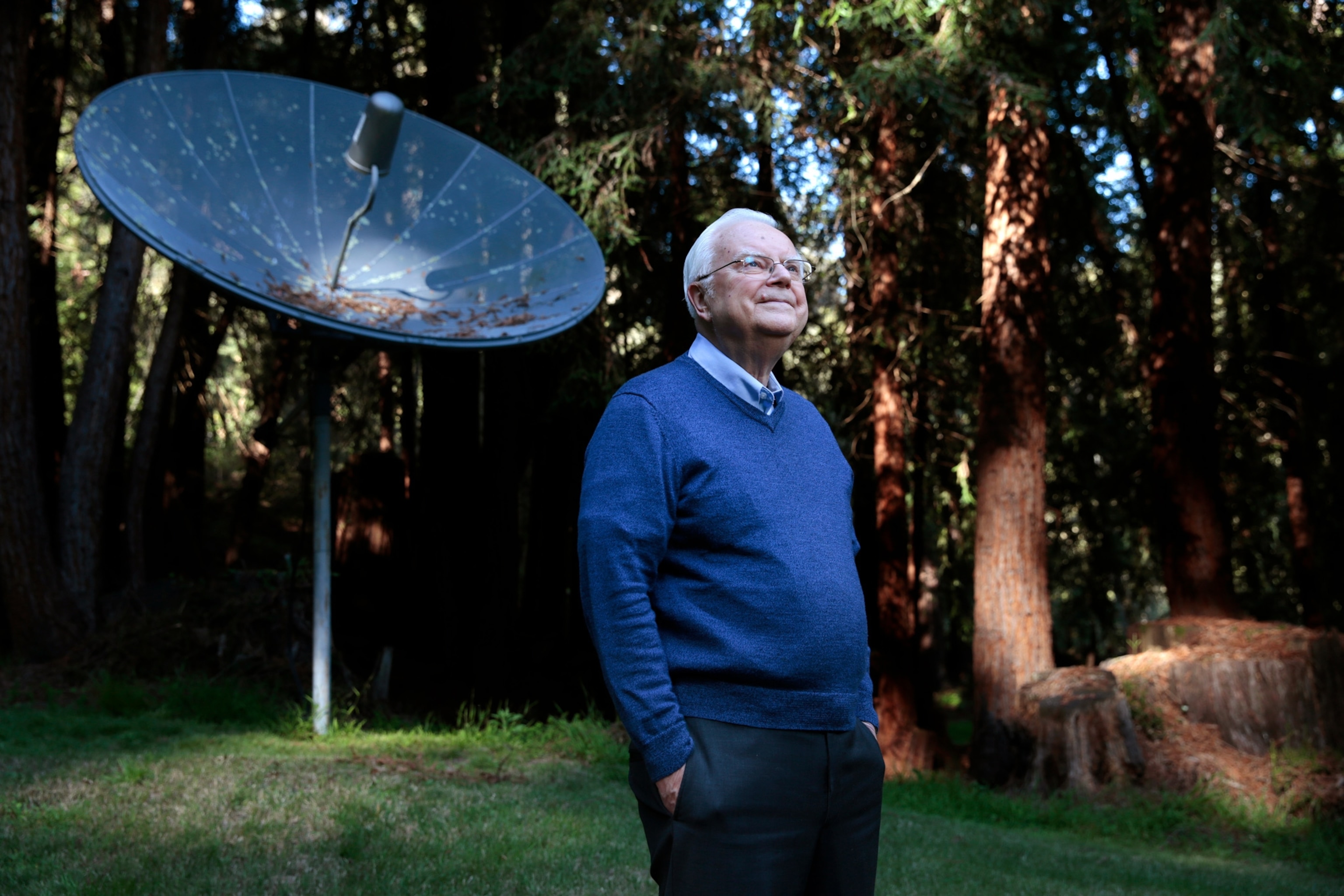
We didn’t go see the telescope the last time I was in Puerto Rico. I flew down in 2019 with my partner Scott—an astronomer—for a meeting about Arecibo’s future in Old San Juan, about 60 miles from the radio dish. The observatory, which had faced years of threatened budget cuts, was now under new management, and the dish had finally been spruced up. I wanted to go see the mold-free dish and visit a favorite swimming hole near the Arecibo lighthouse, but we decided to spend a day in San Juan instead.
I threw on a pair of bell-bottoms and an off-the-shoulder blouse, channeling my mom in the 1970s, and we spent hours walking Old San Juan’s cobbled streets. We visited La Perla, the site of some of Dad’s shenanigans a half-century earlier, and watched the kites flying above the green near the city’s old fort.
We thought we’d be back soon enough, and I made Scott promise we’d go see the telescope next time.
A lost cathedral to science
In the weeks leading up to Arecibo’s collapse, the telescope’s condition grew increasingly dire. After evaluating the structure, engineers reported in November that without stabilization or repair, its demise was inevitable. But any repairs requiring workers to scale the towers or go up to the platform were potentially lethal. The NSF quickly shut down the telescope and planned to demolish it in a safe and controlled way.
Gravity triumphed quickly, though. Even as new cables were on their way, Arecibo ultimately succumbed to the slow creep of degradation and decay.
Knowing that the giant could fall didn’t make the moment any easier to witness. Even folks who’ve only ever seen the place in photos or feature films lament its destruction, and for those who know and love the observatory, the wound is as gaping as the now-empty space between the telescope’s broken towers.
Arecibo was more than a scientific instrument that grew out Cold War tensions. It was a powerful symbol of humanity’s boundless curiosity, an engineering marvel, a destination, an invaluable resource for local communities. It still is an inspiration.
For many, the telescope’s downfall was as stunning as watching Notre Dame burn. Just as a cathedral is more than a beautiful building, Arecibo was more than a mere telescope, inspiring amazement among practicing astronomers and visiting tourists alike. To appreciate its importance, you didn’t need to be versed in science, just as you don’t need to be religious to be awestruck by Notre Dame.
Unfortunately, unlike Notre Dame, Arecibo doesn't have any rich benefactors coming to its rescue. Instead, small but motivated groups of scientists, engineers, and community members are rallying for a rebirth. They’re writing to representatives, meeting with Puerto Rico’s governor—who just designated $8 million for clean-up and a site redesign—and making the case to scientific committees that an instrument of Arecibo’s caliber cannot simply vanish without humanity losing out.
If they have their way, Puerto Rico could once again be home to a treasure that gleams beneath violet skies and golden sunlight, tuning into the whispers of the cosmos and greeting each perfect sunrise amidst the intoxicating songs of the jungle’s twilight symphony.


